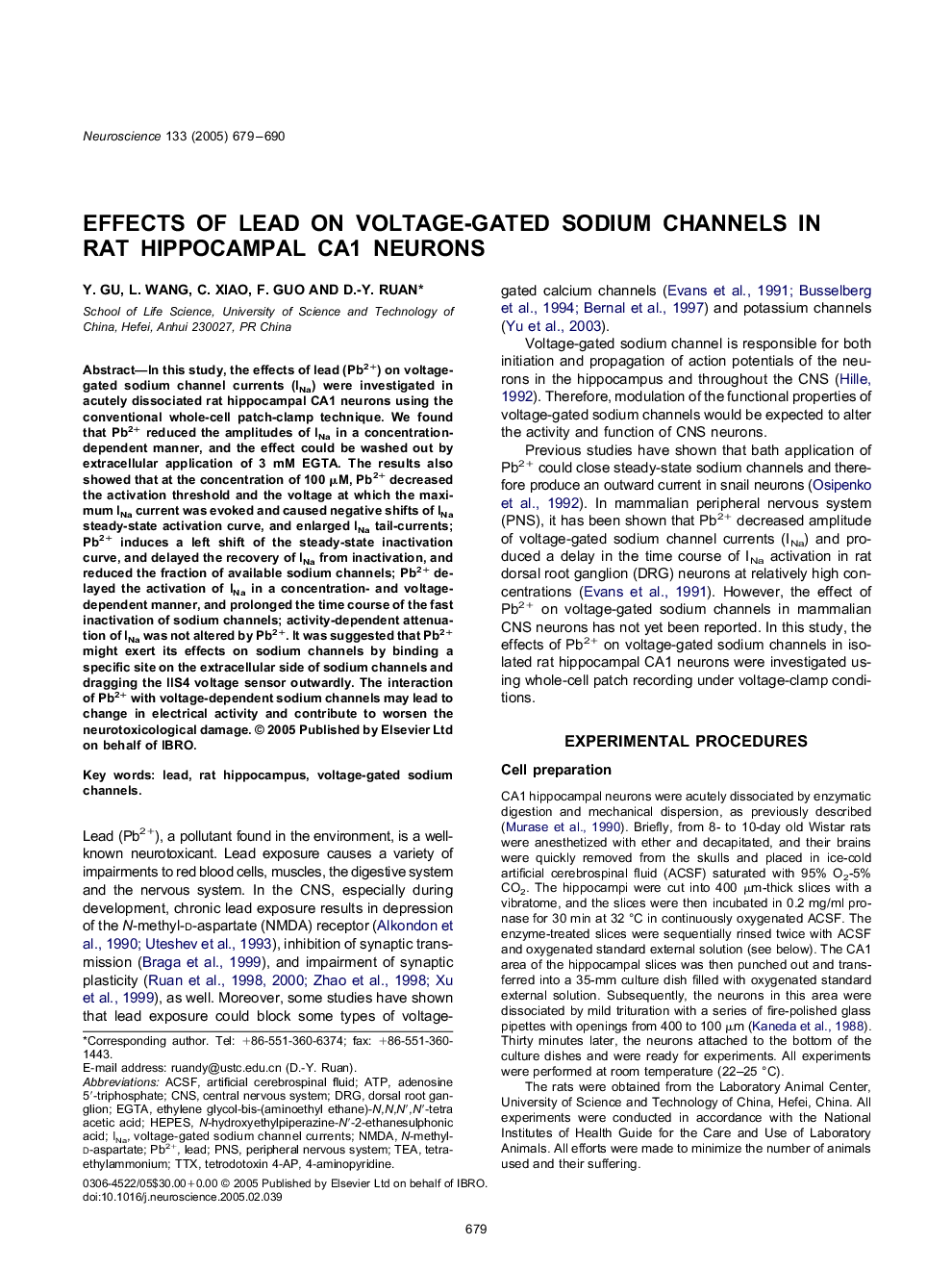| Article ID | Journal | Published Year | Pages | File Type |
|---|---|---|---|---|
| 9425617 | Neuroscience | 2005 | 12 Pages |
Abstract
In this study, the effects of lead (Pb2+) on voltage-gated sodium channel currents (INa) were investigated in acutely dissociated rat hippocampal CA1 neurons using the conventional whole-cell patch-clamp technique. We found that Pb2+ reduced the amplitudes of INa in a concentration-dependent manner, and the effect could be washed out by extracellular application of 3mM EGTA. The results also showed that at the concentration of 100μM, Pb2+ decreased the activation threshold and the voltage at which the maximum INa current was evoked and caused negative shifts of INa steady-state activation curve, and enlarged INa tail-currents; Pb2+ induces a left shift of the steady-state inactivation curve, and delayed the recovery of INa from inactivation, and reduced the fraction of available sodium channels; Pb2+ delayed the activation of INa in a concentration- and voltage-dependent manner, and prolonged the time course of the fast inactivation of sodium channels; activity-dependent attenuation of INa was not altered by Pb2+. It was suggested that Pb2+ might exert its effects on sodium channels by binding a specific site on the extracellular side of sodium channels and dragging the IIS4 voltage sensor outwardly. The interaction of Pb2+ with voltage-dependent sodium channels may lead to change in electrical activity and contribute to worsen the neurotoxicological damage.
Keywords
Related Topics
Life Sciences
Neuroscience
Neuroscience (General)
Authors
Y. Gu, L. Wang, C. Xiao, F. Guo, D.-Y. Ruan,
